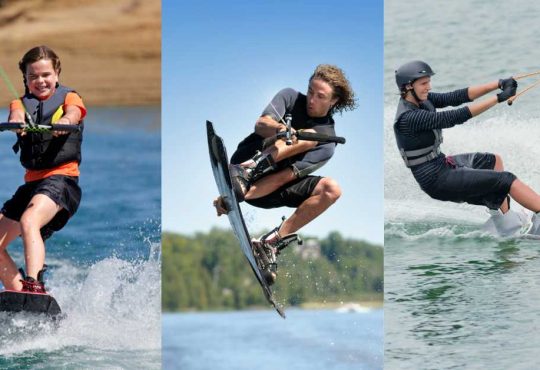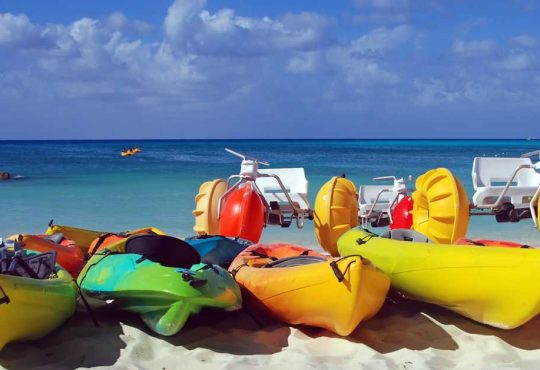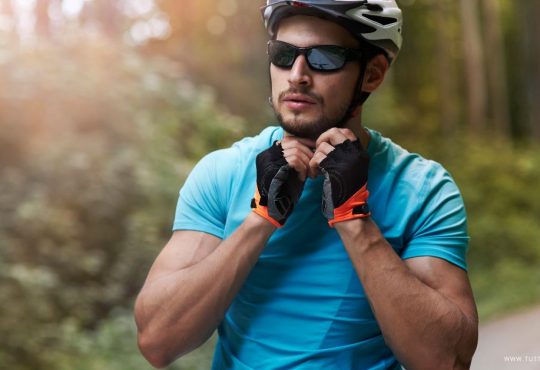I was 23 when I started off-piste skiing. I’ve recreated my entire life in the mountains, skiing at resorts, backpacking and climbing the Cascades volcanoes. I had taken a National Outdoor Leadership School mountaineering course and was writing for a ski magazine. Yet I felt completely lost on where to start. So I borrowed some equipment and took a Level 1 course from the American Institute for Avalanche Research and Education (AIARE), which at the time seemed like the only way to get started.
The three days of AIARE Recreational level 1 it includes 24 hours of instruction, usually around eight hours of classroom learning followed by two eight-hour field days, and offers an intensive course in snow safety, avalanche terrain and companion rescue. It has long been the standard entry point for backcountry beginners.
“The memo is out,” says Scott Schell, executive director of the Northwest Avalanche Center. “If you are the casual REI newbie looking for a tour binding, you somehow also understand that you should take a level 1. It’s amazing that it’s such a strong message.”
But, Schell points out, there may be better places to start your cross-country skiing career than at a golf course.
Over the past decade, multiple brands, nonprofits, and other cross-country adjacent groups have worked for solid educational resources available online. However, it has always been piecemeal. Then, at the beginning of this winter, Exum mountain guide certified by the International Federation of Alpine Guide Associations Mark Smiley launched “A Comprehensive Guide to Avalanche Safety”, a course available on its website Sense of mountain, for $ 249. Smiley estimates it takes about seven to eight hours to complete. I was curious how an online education could compete with the traditional AIARE course, so I signed up.
“The person I took this course for is essentially my 24-year-old person,” says Smiley. “I was like, “Hey, I want to go off-piste skiing, I’m super excited, I don’t want to go crazy.” Of course, you can’t remove all the risks. But I want to make the information more known and knowable in an organized way “.
Smiley is passionate about teaching; Mountain Sense is also home to online courses on mountaineering, abseiling, crevasse rescue, anchor building and more. Each route, including the one that addresses avalanche safety, is based on his experience, but is still “standing on the shoulders of giants,” as he puts it. Smiley has a lot of education behind him, including courses with AIARE, the American Avalanche Institute, and various leadership companies and certification boards. Its program draws on decades of research and features a colorful cast of experts, including the Exum guide Zahan Billimoria and professional skier Colter Hinchliffe, who also share their knowledge.
Once you have purchased the course, you have permanent access to the materials. It is divided into seven sections, each centered around a pillar of cross-country skiing, including the nine avalanche problems you will meet, how to be a responsible ski partner and how to dig snow pits. It covers similar terrain to the classroom portion of AIARE 1 recreational level. Basically, there are no field members, so you won’t learn much about rescuing your mates – it’s something best taught in person. But you will learn how a prolific backcountry skier assesses the weather and snowpack before a day of skiing, what has taken the field pros out of their near misses, and what communication tactics make backcountry teams safe and fun. In all of this, Smiley is engaging, fun and straightforward, making complicated concepts easily digestible. He is interested in what happens above the snow, such as scoring excellent conditions, as he is in science below the surface. Quizzes, links to external resources, and small written sections punctuate short videos, which make up the bulk of the material. An assessment ultimately measures your retention rate, a useful step that isn’t included in a Tier 1.
I took the Smiley course in the first couple of months of this ski season and came out thinking it might be a better launch pad for some beginners than AIARE Level 1. (It was also a useful upgrade for me, a skier of intermediate backcountry five years after my first aviation course.)
The problem with a level 1 isn’t the resume or the format, it’s just that it might not be the best first step. “There is a lot that could be done ahead of time and pace of the student that would enable people to get a lot more out of a conventional level 1,” says Schell. “Students today lack the core skills that people 20 or 30 years ago had when they came to an introductory avalanche course. The number of people who show up on the morning of their field day who have their skins in their box is simply remarkable ”.
Already possessing skills such as reading a topographic map, layering appropriately, packing the essentials, using your equipment, and ski touring efficiently will help you get more out of your time on the course. “Just imagine someone who is fully committed to learning how to do a turning point, this kind of complicated yogic move, and now you expect them to absorb how to read avalanche terrain? It’s a tall order, ”says Schell.
There is nothing wrong with being a beginner and there is nothing wrong with presenting yourself to an educational course as a total beginner. But these are the people that Smiley’s course could really serve. A good avalanche ride will show you just as much as you do do not do it know and where your learning should go. Smiley achieves this result both with safety on the snow and with ski touring in general. Demystify a cryptic sport so that you understand where to start. Afterward, you’ll be better equipped to confidently shop your gear, pack a backpack for a day in the backcountry, and head out on low-impact shakedown tours. You can start learning the basics safely on your own before you start for an in-person course in the field, which typically costs between $ 500 and $ 700.
Obviously there are limitations to online learning. Jessica Baker, an avalanche education instructor for the American Avalanche Institute and a certified ski guide by the American Mountain Guides Association, points out that time in the field is absolutely essential. “Reading the mountains, understanding the changing conditions and understanding the dangers in terms of avalanches is all sensory. That element of feeling is actually the most important part, ”he says. Online courses like Smiley’s draw on the brain side of learning, but don’t offer the same sensory input in the field that days in the field do.
Baker points out another possible drawback with online learning. His in-person courses replaced the classroom component with an online curriculum this year due to the pandemic, and he noted that on the first field day, the number of students who actually come completed their online courses are reliably reduced to none. “While I’m sure there are people out there who are responsible for how they approach an online course, I think a lot of people just tend to skip things,” she says. “Ultimately, life or death decisions are made from this information. It is then that we must ask ourselves: is an online course enough? Will this give someone the tools they need? “
Smiley’s course places the burden on the student of being a self-motivated student, taking the field and practicing. And realistically, a level 1 should do the same. There is a limit to all education. Off-piste skiing isn’t something you can learn in a weekend. The only way to develop skills, experience and confidence is to frequent that terrain often and for a long period of time.
“I’ve always joked that I think a level 1 should be 40 days in the field,” says Schell. “You take a month and a half off, and this is your level 1. It’s just hard to get a lot out of a three day class.”
Offers like Smiley’s make it possible, in a sense, to level 1 of 40 days. You can tackle him at your own pace and he is available to answer questions and offer advice throughout the season. If you don’t understand a pit you’ve dug, it’s there as a resource – his students can email him or add comments to the learning form and he’ll respond within a day or two. After a tour, you can easily log in and review a video explaining what whumpfing sounds like. Or you can check your local forecasts, revisit the sections explaining how to read them, and then make your plan.
At school, some students learn best from books and others from lessons, some by watching and others by doing. The best thing teachers can offer their students are options and the ability to direct their learning in the direction that suits them best. Smiley’s course is a welcome addition to an educational field that lacks variety. It doesn’t completely replace a Level 1 and its students should still seek time in the field with experienced mentors, guides or instructors, and Smiley is happy to connect its students with a local guide or educator when they are ready.
While you can’t learn to travel safely in the backcountry just by staring at a computer screen, it can be a useful place to start or continue your education.
Main photo: Courtesy of Janelle Smiley





